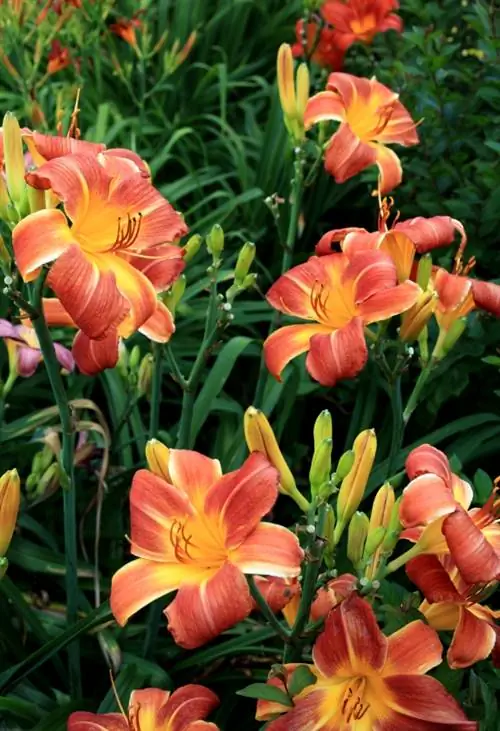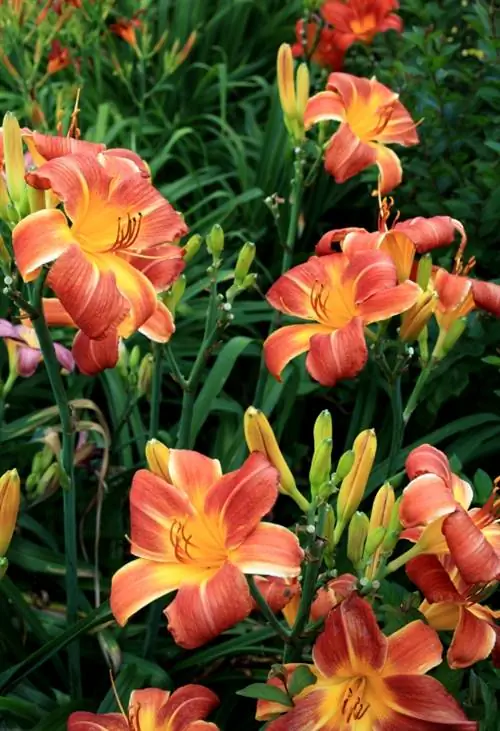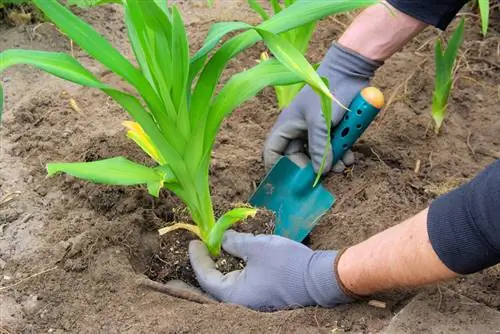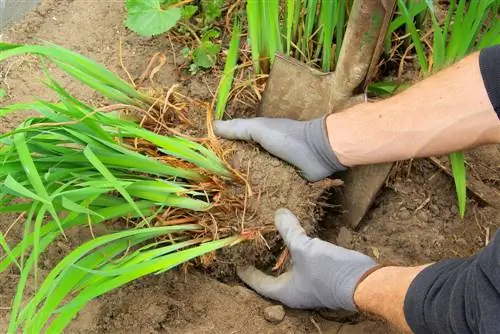- Author admin [email protected].
- Public 2023-12-16 16:46.
- Last modified 2025-06-01 06:02.
Daylilies - these easy-care plants are space-saving, site-tolerant and frugal. Sometimes it may be necessary to share them. But why and how does this happen without damaging the plants?

When and how should you divide daylilies?
Daylilies should be divided in the spring before budding or in the fall after flowering in order to maintain their flowering potential and to multiply them. The roots are carefully dug up, divided in the middle and replanted separately at a distance of 50 cm.
Why should you divide daylilies?
Over the course of its life, every daylily, no matter how well cared for, becomes lazy over time. Even the best fertilization doesn't help. For this reason, it is recommended to divide the daylily from time to time.
Dividing/rejuvenating has the wonderful side effect of propagating this plant. This is the easiest, fastest and most proven method of propagation for them. The result is true-to-variety plants.
The right time to share
The right time to divide daylilies is outside of their growing season. This means it can be divided in the spring before budding or in the fall after flowering without causing any major damage.
How to proceed
If you want to divide the daylily to propagate it, choose a he althy and robust appearing mother plant. You carefully dig out their roots in spring or autumn, for example with a digging fork (€139.00 on Amazon). Beforehand, you can cut the leaves of the plant down to 15 cm. This makes it easier to see the root area. Alternatively, the leaves should be cut off after dividing.
Now the roots are freed from any remaining soil. This can be done with water if the soil attached to it is clay. Otherwise, you can shake off the soil. Using a knife, each root is cut in half (vertically downwards). If there are already prominent sections, they can be broken off by turning and turning. Fist-sized root pieces are best.
It continues like this:
- Plant roots separately (distance of 50 cm)
- should be 2 to 4 cm below the surface of the earth
- correct location: sunny to partially shaded
- suitable substrate: nutrient-rich, humus, loose
- Watere regularly for 2 weeks
Tips & Tricks
If the roots have already been dug up, injured root parts and leaves should be removed, which would otherwise rob the daylily of unnecessary strength.






